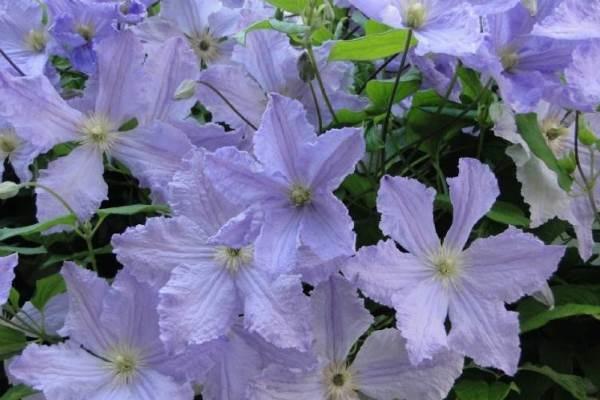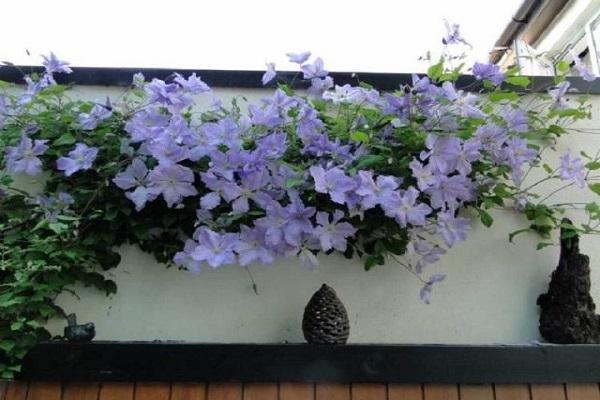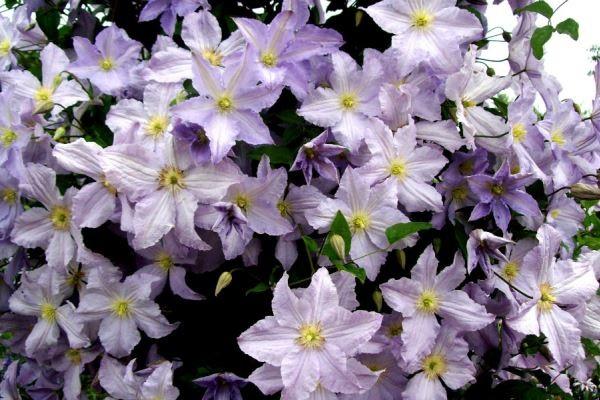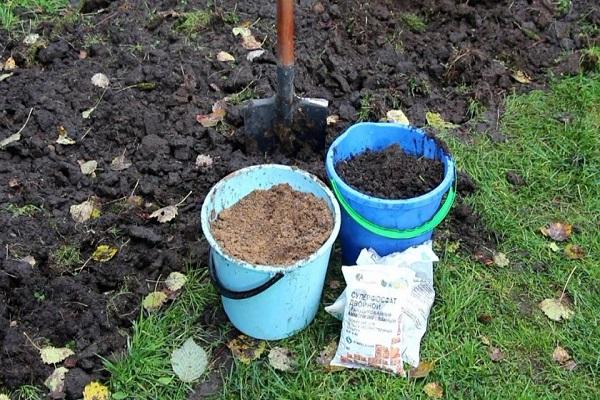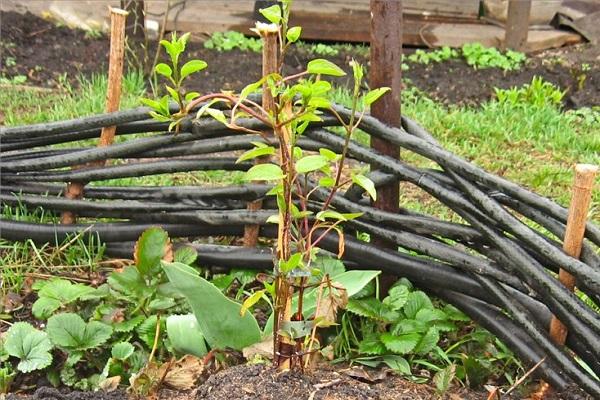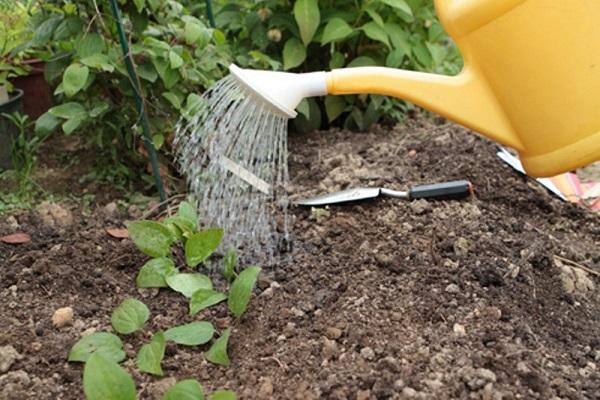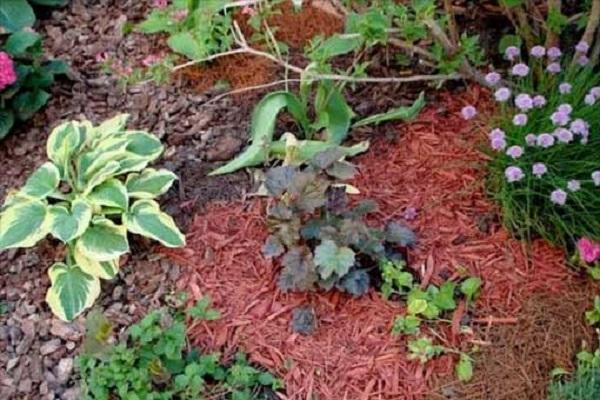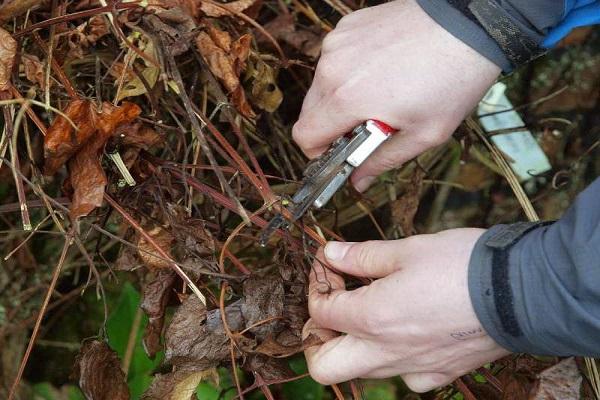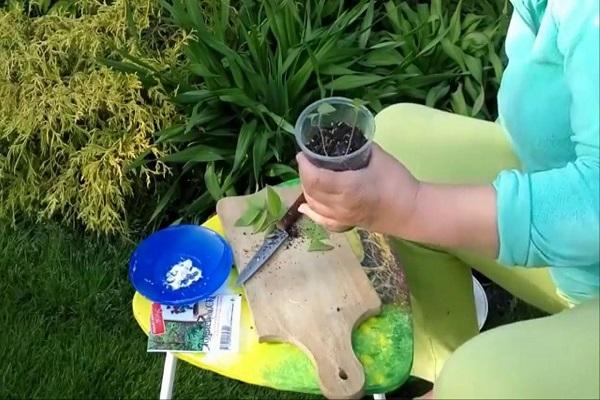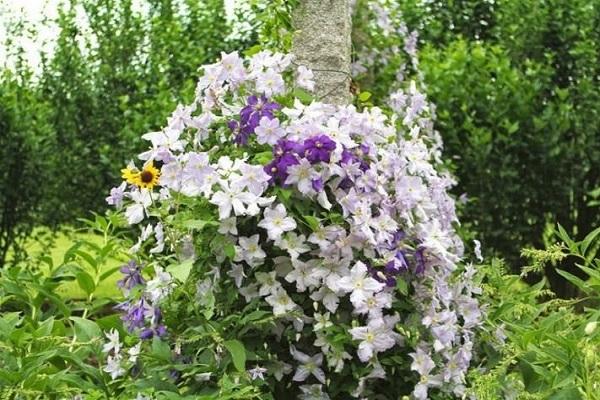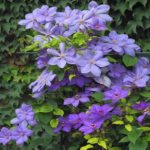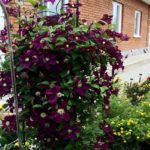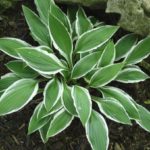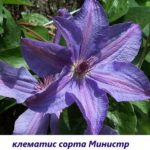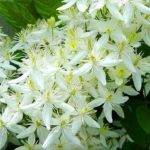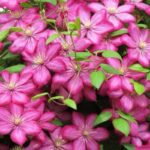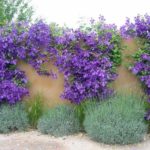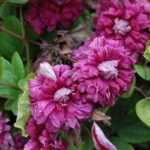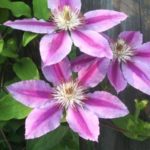Clematis is used to decorate hedges, house walls, terraces or gazebos. These liana-type shrubs easily cling to support and quickly grow over the surface. Those who grow clematis in their garden choose varieties zoned for a specific climate zone. The frost resistance of the clematis variety, which is called Blue Angel, allows it to be grown in any region of the country.
- Description and characteristics of the clematis variety Blue Angel
- Trimming group
- The main positive and negative aspects of the variety
- Subtleties of cultivation
- Selection and preparation of a landing site
- Seedling preparation
- Landing rules
- How to care for culture
- Watering and fertilizers
- Mulching and loosening
- Trimming
- Preparing for winter
- Disease and pest control
- Flower propagation methods
- Examples in landscape design
Description and characteristics of the clematis variety Blue Angel
The Blue angel variety was bred by Polish breeders in the second half of 1989. It was named Blue Angel for the sky-blue hue of its buds.
Large buds with 6 petals bloom on a vine reaching 4 meters. The diameter of the inflorescences is 14-15 centimeters. The variety belongs to late-flowering varieties; inflorescences are formed exclusively on shoots formed in the current season.
Features of the Blue Angel variety:
- the presence of bright yellow stamens that stand out against the blue background of the petals;
- complete absence of aroma;
- resistance to low temperatures - the shrub can withstand temperatures below -30 degrees;
- stable and long flowering from July to October;
- ease of care;
- the ability to quickly adapt to new conditions.
Trimming group
Experts share clematis varieties into several trimming groups. The classification is based on the characteristics of the appearance of spring buds.
Blue Angel – clematis 3 pruning groups. This means that the bush needs complete autumn pruning of the bushes after flowering. This technique has several advantages:
- promotes easier care during the pre-winter period;
- ensures abundant and stable flowering next season;
- allows you to reduce the territory of the area allocated for the crop due to the complete destruction of the vines.
Clematis 3 groups prunings can bloom only on current shoots - this feature is in demand among flower growers who are forced to grow flower crops taking into account early frosts in the fall and late onset of heat in the summer.
The main positive and negative aspects of the variety
The advantages of the Blue Angel variety, in addition to prolonged and abundant flowering, relate to quality characteristics that make care easier:
- frost resistance;
- drought resistance;
- immunity to fungal diseases;
- flowering stability;
- the ability to quickly increase green mass in the spring.
Gardeners consider the disadvantages of the variety to be its soft root system, which is sensitive to overwatering. Excessive soil moisture leads to the development of rotting processes, which affect the general condition of the plant.
Subtleties of cultivation
The unpretentiousness of Blue Angel clematis does not exclude compliance with the rules of care. When planning plantings, it is necessary to take into account the requirements of clematis for the location, and also establish a suitable watering schedule.
Selection and preparation of a landing site
Clematis Blue Angel grows in sunny areas, but needs some shade. The best option is to plant the variety along hedges, terraces, and near the walls of houses. Thanks to such a neighborhood, a balance is achieved between the presence of light and shadow for the culture.
For full growth, clematis of this variety requires additional support.
The vines tenaciously and quickly wrap around the stands and grow not only in height, but also in breadth.
Seedling preparation
Seedlings that have at least one new shoot on their stems are suitable for spring planting. To enhance the ability to form roots, clematis before planting is immersed in a solution with the addition of a root growth stimulator.
Reference! A plant purchased from a nursery that has a closed root system, after planting, takes root much faster than those that have an open root system.
Landing rules
Seedlings are planted at a distance of no more than 1 meter from each other. For planting, prepare a hole 60 centimeters deep. A drainage layer is laid at the bottom of the hole, then covered with soil. After installing the seedling, dig in the support, then fill the hole with soil.
The soil is not filled to the edge, since after planting clematis requires mandatory mulching, the layer of which should be from 5 to 8 centimeters.
How to care for culture
After planting, it is necessary to provide for a schedule of watering, loosening and fertilizing the crop, then clematis will quickly gain green mass and will delight you with abundant flowering by the second half of July.
Watering and fertilizers
Water clematis as needed. If the air temperature rises, then the number of waterings is doubled. At the same time, make sure that the root system is not over-moistened.
During the adaptation period, clematis is not fed, then fertilizers are applied according to the schedule:
- when growing greenery, add nitrogenous fertilizers;
- during budding, feed with potassium;
- after flowering, mineral combined mixtures are added.
Mulching and loosening
Clematis needs full mulching. To do this, crushed bark is added to the circle around the main stem. Mulch helps retain moisture and reduce the amount of watering. Mulch protects the root system during the hot period, when the vine is focused on shoot formation and budding.
Loosening is an important stage in caring for clematis of this variety. The supply of additional oxygen promotes more intensive root growth.
Trimming
Complete autumn pruning is a mandatory condition for growing. After flowering, the vines are cut to a remainder of 20 centimeters above the soil level. Scourges with faded buds are burned.Complete pruning contributes to a more successful wintering of the bush, and also additionally rejuvenates the plant. After complete autumn pruning, clematis blooms again on new stems and shoots.
Preparing for winter
To minimize the risk of freezing of the root system, clematis is mulched with straw before wintering. The straw layer should not be less than 10 centimeters. Experienced gardeners recommend covering the bush left after pruning for the first winter. For covering, use burlap or non-synthetic fabric.
Disease and pest control
Clematis are often attacked by rodents. Small pests gnaw off the roots of the plant during cold and hungry periods, when the bushes are already beginning to enter a period of winter dormancy. In order to prevent attacks, owners often use special traps that are installed near the plantings. Another method of repairing damage is to install a net around the clematis.
The Blue Angel variety is disease resistant. Fungal infections threaten plantings only if watering rules are not followed. Excessive moisture of the roots makes the system vulnerable, it becomes infected with gray rot and gradually dies.
Flower propagation methods
The Blue Angel variety is usually propagated by dividing the bush. Plantings using seeds or by digging in seedlings do not produce full-fledged shoots. The division of the bush is carried out in spring or autumn, separating a full-fledged adult plant from the mother’s overgrown stem. Then it is planted according to all the rules for planting clematis and left for adaptation. After an adaptation period, clematis is completely pruned in the fall in order to observe the flowering of a new adult shrub the following year.
Reference! The germination rate of clematis seeds is 40 percent.
Examples in landscape design
Landscape designers of household plots and summer cottages love clematis for its unpretentiousness, versatility and ability to replace several types of flower crops. Traditionally, the Blue Angel variety is planted for:
- arch decorations;
- entwining a terrace or gazebo in the depths of the garden;
- camouflage the fence around the entire perimeter;
- porch decorations.
The Blue Angel variety is also used for planting on a solo support, which fits well into the surrounding design. The condition for this technique is the use of a support that is higher in height than the maximum height of the vine.
A common technique is to combine several varieties at the same time. Different budding times allow you to create the effect of cascading flowering throughout the entire area.
The Blue Angel variety is combined with climbing roses, honeysuckle, and lemongrass. It is picturesque surrounded by coniferous trees. Designers recommend using combinations with gray or blue spruce.

